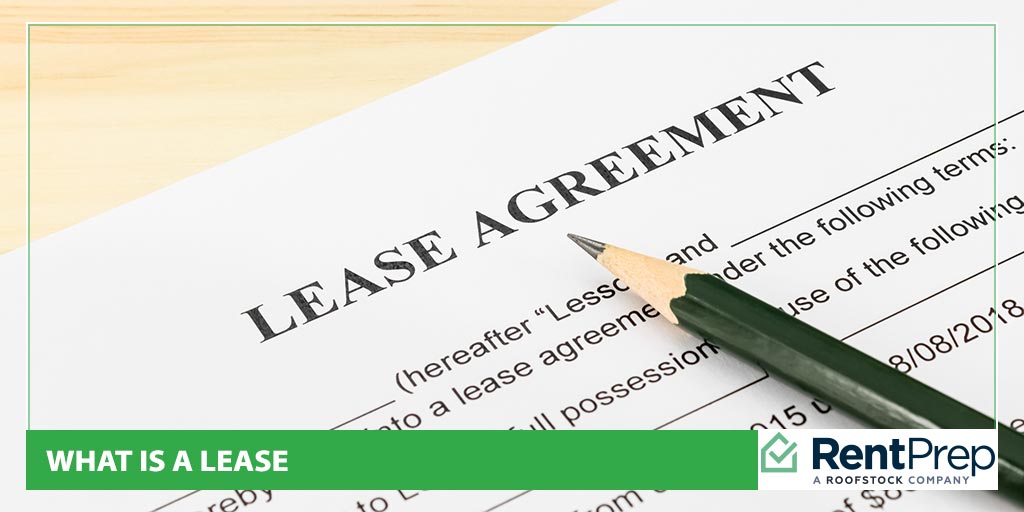
Understanding leases is crucial for landlords. After all, the lease is the backbone of your rental business, defining the rules of engagement between you and your tenants. It’s your rental playbook, safeguarding both your interests and those of your renters.
In this guide, we’ll break down lease jargon, explaining what a lease is, what key parts you should include in this legally binding document, and why each one matters. By the end, you’ll have a more solid grasp of what a comprehensive lease agreement should encompass.
Remember, when in doubt, seek advice from a landlord-tenant lawyer to ensure that your lease complies with your state’s laws.
Table Of Contents: Lease Agreements
What is a lease agreement, and what should this contract include? Unlock the essentials of the lease, from understanding what it entails to ensuring your contract covers all necessary components.
What Is A Lease?

A lease is a contract that outlines the terms under which one party agrees to rent an asset owned by another party. In the case of a rental lease, the tenant agrees to rent the landlord’s property under the terms and conditions of the contract. Leases can also be used for other types of assets, such as equipment or facilities.
A rental lease is designed to guarantee the tenant’s fair use of a habitable property, that the landlord will receive regular payments for a specific period, and that the tenant will maintain the condition of the property.
Since a lease is a legally binding agreement, there can be legal consequences for both the landlord and the tenant if they break the terms and conditions of the lease.
What Should Be In A Rental Lease?
Since a lease is legally binding, landlords’ documents used to manage their properties should be reviewed by a lawyer to ensure they comply with federal and state laws.
While the details of every lease will differ, residential rental agreements should include the same basic information.
Parties To The Agreement
The lease should include the name and contact information of both the landlord and the tenant. It’s also best practice to include the details of any rental management professional or agent involved in managing the property. All adult tenants who will be occupying the property should also be included in the lease.
This ensures the contract is binding for everyone living in or managing the property, and their signature on the lease is evidence that they’re aware of the terms and conditions of the contract.
Property Details
First and foremost, the lease should describe the asset. In the case of a rental property, this will be the address and a general description such as the number of bedrooms and bathrooms, whether there is a backyard, and so forth.
If the rental unit is part of a larger complex, the property details may also include what parking is included and what shared spaces, such as a garden or swimming pool, can be accessed by the tenant.
The law interpreting the lease will depend on the property’s location, and the document should state the jurisdiction explicitly.
All parties must sign the lease for it to be legally binding.
Terms Of The Lease
The overall lease terms comprise the start and end dates of the tenant’s occupancy. This period may be a specific duration, such as one year, constituting a fixed-term lease.
Alternatively, a month-to-month lease allows the contract to roll over for continuous renewal as long as both the landlord and tenant are satisfied. Either party can terminate this arrangement by providing the necessary notice.
The details of how much notice is required and how either party must give that notice should be included in a lease and be consistent with local laws. In New York, for example, either party must provide at least one calendar month’s notice to end a month-to-month lease.
Other lease types include ground leases, which are typically long-term contracts in which the tenant rents the “ground” or land and has the freedom to develop the property, and subleases, where a landlord rents out a property already leased to another tenant to a new party for part of the existing lease. However, fixed-term and month-to-month leases are the most common.
The lease terms should also include how the property can be used. For example, the agreement might state that the property can be used only for residential occupancy and specify the maximum regular occupancy.
This section should also include details of the landlord’s right of entry. This clause establishes how much notice landlords will give before visiting the property and how that notice should be given. It should also classify what is considered an emergency, such as a gas leak or a fire, that might see the landlord enter without prior notice.
Details Of The Rent
The lease should include the specifics of the rent, including the amount, when it’s due each month, and where and how the tenant should pay the rent.
The agreement should also include any fees and penalties that may apply for late or missed payments. Again, this must be compliant with local laws. For example, in New York City, landlords must give tenants a five-day grace period for late rent, and late fees cannot exceed $50 or 5% of the rent, whichever is less.
Security Deposit Details

The lease should include details of the security deposit to be paid by the tenant. Local laws often regulate the allowable amount limit for a security deposit. In New York City, for instance, most residential security deposits are capped at one month’s rent. In California, the law caps security deposits at two months’ rent for unfurnished and three months for furnished properties.
The lease should also include where and how the security deposit should be paid, a deadline for payment, and a description of how the deposit will be held and returned to the tenant. For example, in New York City, security deposits must be returned within 14 days of the lease ending.
The purpose of the security deposit is to help protect the landlord from losses due to damage to the property or tenants leaving with outstanding rent.
States also regulate how landlords can use security deposits. In California, landlords can use security deposits to cover unpaid rent, repair damages not considered ordinary wear and tear, and cover the cost of excessive cleaning if necessary.
The lease should include instructions on how the security deposit can be used, but it must be legally compliant for it to be applicable.
Outline Of Responsibilities
While a property is under lease, both the landlord and the tenant are responsible for maintaining its condition.
For example, the landlord must maintain the rental in a habitable condition, ensuring that utilities such as heat and water work properly, managing pests, and responding promptly to structural issues, such as a burst water pipe. The landlord may also be responsible for maintaining the lawn or other shared spaces.
Meanwhile, the tenant will be responsible for keeping the property clean in a way that will not attract issues such as pests and mold, avoiding damage to fixtures and appliances, and reporting any problems in a timely manner.
The lease should clearly define each party’s responsibilities, explain how issues should be reported, and establish a reasonable timeline for resolving them.
Other Rules And Regulations
Individual lease agreements will likely include other rules and regulations. For example, there might be rules about pets. This may include whether pets are allowed, any specific types of animals that are not allowed, and details of additional pet-related deposits.
The landlord may also include rules about how much decoration and personalization the tenant can do and whether they can sublet, either long-term or short-term using vacation rental services.
Renewal And Termination
A lease agreement should also explain exactly how a lease can be renewed or terminated. This should include legally compliant notice periods, how notice should be given, and the condition in which the tenant should return the property when they vacate.
This section should also cover any penalties that might apply if the tenant or the landlord tries to terminate the lease before the end of the agreement.
Lease FAQs
Below are answers to some of the most frequent landlord questions about leases.
How can I make my lease agreement legally binding?
For a lease to be legally binding, it must contain all the essential elements discussed above, be compliant with state and local laws, and be signed by both landlord and tenant.
What should I do if a tenant wants to break their lease early?
The lease agreement should include information on what should happen if the tenant wants to exit the lease early. The tenant is usually required to pay a termination fee or continue paying rent until a new tenant can be found, though the landlord is also obliged to find a new tenant in a timely manner.
Some individuals, such as military service members, have unique legal rights that allow them to terminate a lease early if deployed or permanently relocated.
How do I handle security deposits?
State laws govern security deposit rules, specifying limits, allowable uses, and procedures for returns and deductions. Generally, you should keep security deposits in a separate account, provide an itemized list of any deductions for damages or unpaid rent at the end of the lease, and return the remainder of the deposit within the time frame specified by state law.
Getting The Lease Right
Ensuring your lease is well-crafted forms the bedrock of a solid landlord-tenant relationship. It fosters transparency and provides a framework for conflict resolution and legal recourse when needed.
Remember, aligning your lease with the state and local laws governing your rental property is paramount. Non-compliant terms can render portions of your agreement unenforceable and may even jeopardize the validity of other clauses.
Since laws change, however, consider incorporating a severability clause. This provision safeguards your lease by stipulating that if any part of it is deemed invalid, the rest remains valid and in force.
This is also why you should consult a qualified property lawyer if you have questions about any of the clauses you want to include in your lease agreement. Your lease is the cornerstone of your landlord-tenant relationship, so make sure it’s built on a solid legal foundation.
Note: RentPrep does not provide tax, legal or accounting advice. This material has been prepared for informational purposes only and is not intended to provide, and should not be relied on for, tax, legal, or accounting advice. You should consult your own tax, legal, or accounting advisors.

